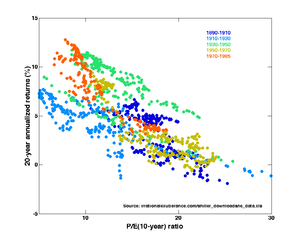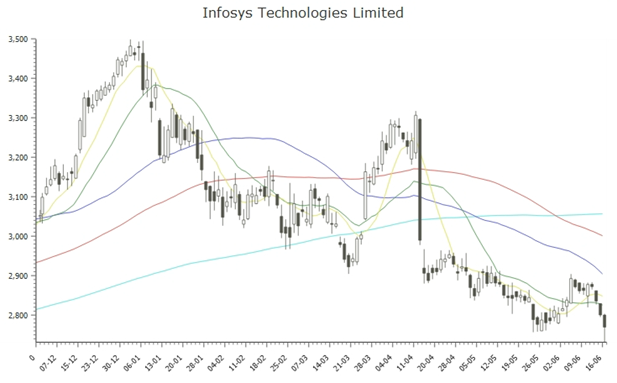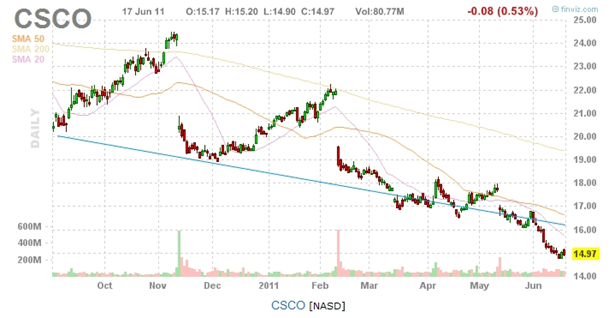Feels like I’m hearing my echo: “The Indian market is narrow, shallow, illiquid and concentrated”.
Category: Your Money

Image by Ronald HN Tan via Flickr
One of the fundamental strategies we had discussed before was value investing. While looking for value plays, it is important to understand the stage at which the rest of the market is with regard to the specific stock. While you may recognize value in a stock (value opportunity) and decide to invest in it, it might take a while for the market to recognize value and bid up its stock price (value in action). Sometimes, you may just be too early and get trapped in a long position while the rest of the market continues to hammer the stock price down, a la, value trap.
For example, let us take a look at Infosys. Given its strong cash position, professional management and brand, a typical value investor could be easily drawn to the stock. However, investing at any point since the beginning of this year would’ve trapped the investor in a dog stock, with every single pop turning out to be an opportunity for the market to sell.
To take another example, this time of Cisco.
There is no doubt that there is a good value opportunity. It has a ton of overseas profits, it is paying out dividends and buying back its stock, it is a market leader in most of its product categories and has an M&A track-record like you hear about. However, the market has yet to recognize it and just like Infosys, buying the stock at any point since the beginning of the year would’ve been a trap.
As the John Maynard Keynes once said, the markets can be irrational longer than you can remain solvent. Value investors will do good to heed that advise.
We get in trouble when we trade for thrills. Anybody who is new to investing should read this article.
via Gambler or Investor? The Truth About Why We Trade – WSJ.com.

Image via Wikipedia
We had a look at candle-sticks, the most popular technical here. Lets turn our attention to fundamental investing. To recap, fundamental investing is based on metrics that are intrinsic to a company. Investors can choose from a broad range of fundamental investing styles to fit their temperament:
Value
Value investing was pioneered by Ben Graham and David Dodd right about the time of the Great Depression. Value investors, typically, buy stocks that trade at a discount to book value, pay out high dividends or have low PE ratios. It involves buying stocks with a “margin of safety”: the discount at which a stock trades to its intrinsic value.
Some characteristics of companies with good value:
- flexible cost structure: ability to reduce or increase costs depending on revenues
- competitive moat: ability to maintain competitive advantages in order to protect long-term profits and market share
- asset cushion: financial position to outlast a downturn
- FCF driven dividend growth: dividends need to get paid out in cash. This could either be through free-cashflow or by higher gearing.
- client base: a company should not be dependent on any one client for a large chunk of its business
In terms of performance, value investing is a lifestyle choice. There are periods where value investing underperforms the broader index. Also, just because something is “value” doesn’t mean that its market price cannot drop further (called the “value trap”).
For example, technology services companies such as HCL and Infosys are typical value plays.
Growth
Growth investors look for companies with strong growth potential. Growth stocks may appear over-valued while looking at standard PE or PB multiples, but the expectation of future earnings drive current prices higher.
Some questions that need to be answered while looking at growth stocks are:
- scalability: how quickly can the company scale operations, sales and distribution to match customer expectations?
- cost of capital: how expensive is it for the company to fund its growth
- dilution: what is the probability that the company will have to dilute existing equity holders to raise capital?
- path to profitability: how close is the company to break-even?
Chasing growth can be a volatile experience. A lot of future expectations are factored into the current price levels and any deviation from meeting those expectations can lead to sudden collapse in prices.
For example, stocks like IRB, GMR Infra trade at high PEs because the market expects a lot of growth in the near future.
Buy & Hold
Buy and Hold investing, as the name suggests, is investing over a long term, typically in excess of 5 years. It goes hand-in-hand with constant-dollar-investing on an index through ETFs or low-cost mutual funds – investors invest a fixed amount of money on a broad, low-cost basket of securities. The idea is that as long as the fundamentals of the economy is strong (over a long term), investors keep buying an index (more when the index falls and less when it rises).
Combined with dividend reinvestment, buy & hold investing is practical for passive investors and has yielded better results compared to active investing when taking into account transaction costs and management fees.

Image via Wikipedia
ETFs are fast becoming a popular choice for passive investors who would like to stay invested in the stock market without having to paying large fees to investment managers. One can think of an ETF as
- a mutual fund that can be traded on the stock exchange as any stock
- an index fund that tracks a popular index (Nifty 50, Junior Nifty, etc…)
- a passive investment vehicle that doesn’t depend on a manager’s stock-picking ability
Essentially, an ETF will be a basket of stocks, much like a mutual fund. It will typically track an index with much lower fees compared to a mutual fund. And investors can trade in and out of ETFs on the stock market through their trading accounts.
Some of the popular ETFs in India are the NIFTYBEES (tracking the Nifty 50 index), JUNIORBEES (tracking the Junior Nifty) and the Bank ETFs KOTAKPSUBK & BANKBEES.
The three things to look out for while investing in ETFs is the total annual expense ratio (should be < 1%), tracking error (< 0.5% annualized) and liquidity (there should a fair amount of daily trading activity).
In the recent past, fund houses have tried to capitalize on sector specific ETFs with varying degree of success. For example, there are more than a dozen Gold ETFs listed in the NSE. However, the primary problem with commodity ETFs that don’t hold the physical underlying is that the tracking error tends to get compounded over a period of time and may not reflect the price actions accurately.
ETFs have traditionally worked great at tracking broad, liquid indexes and remain the preferred way to get passive market exposure.




